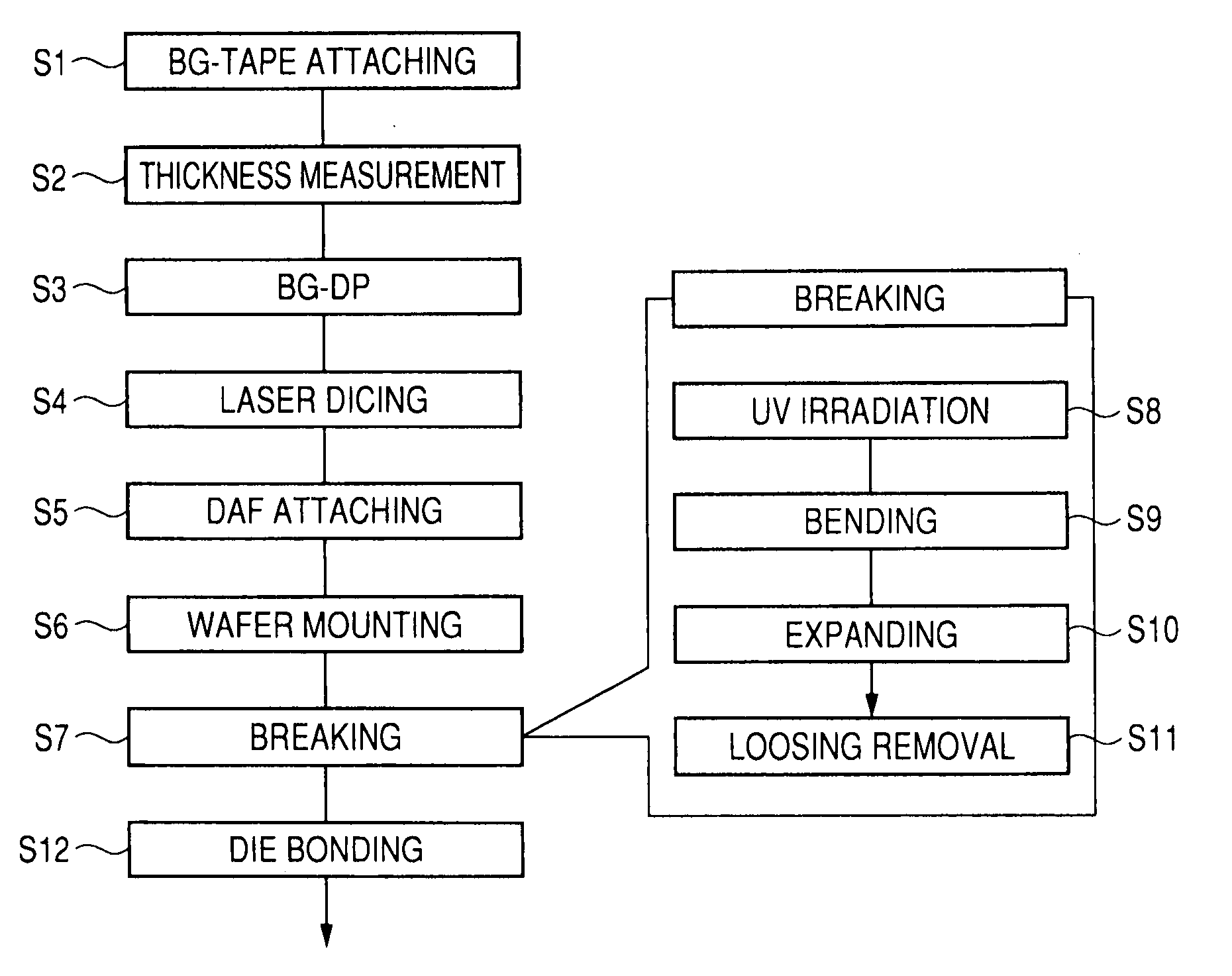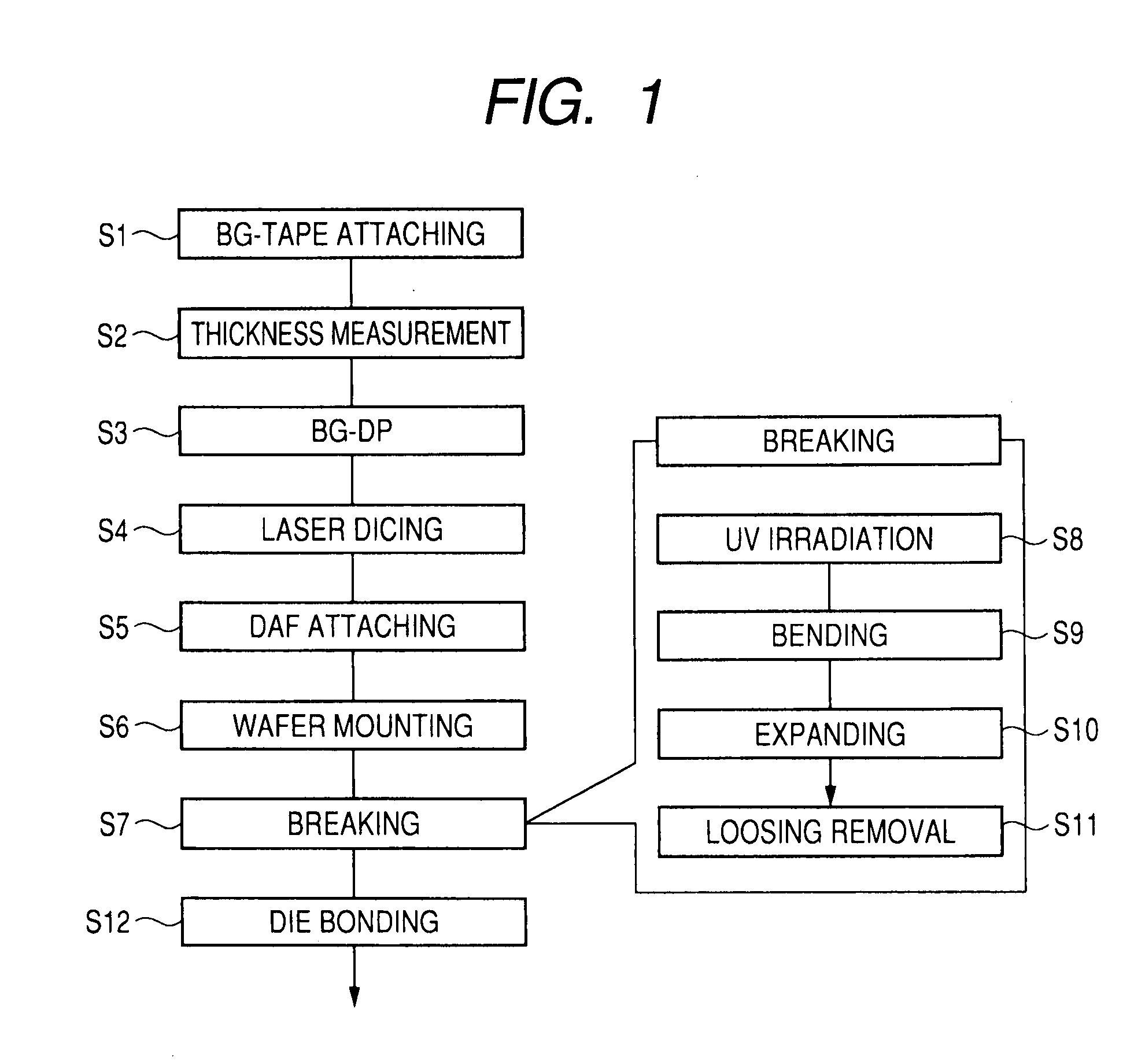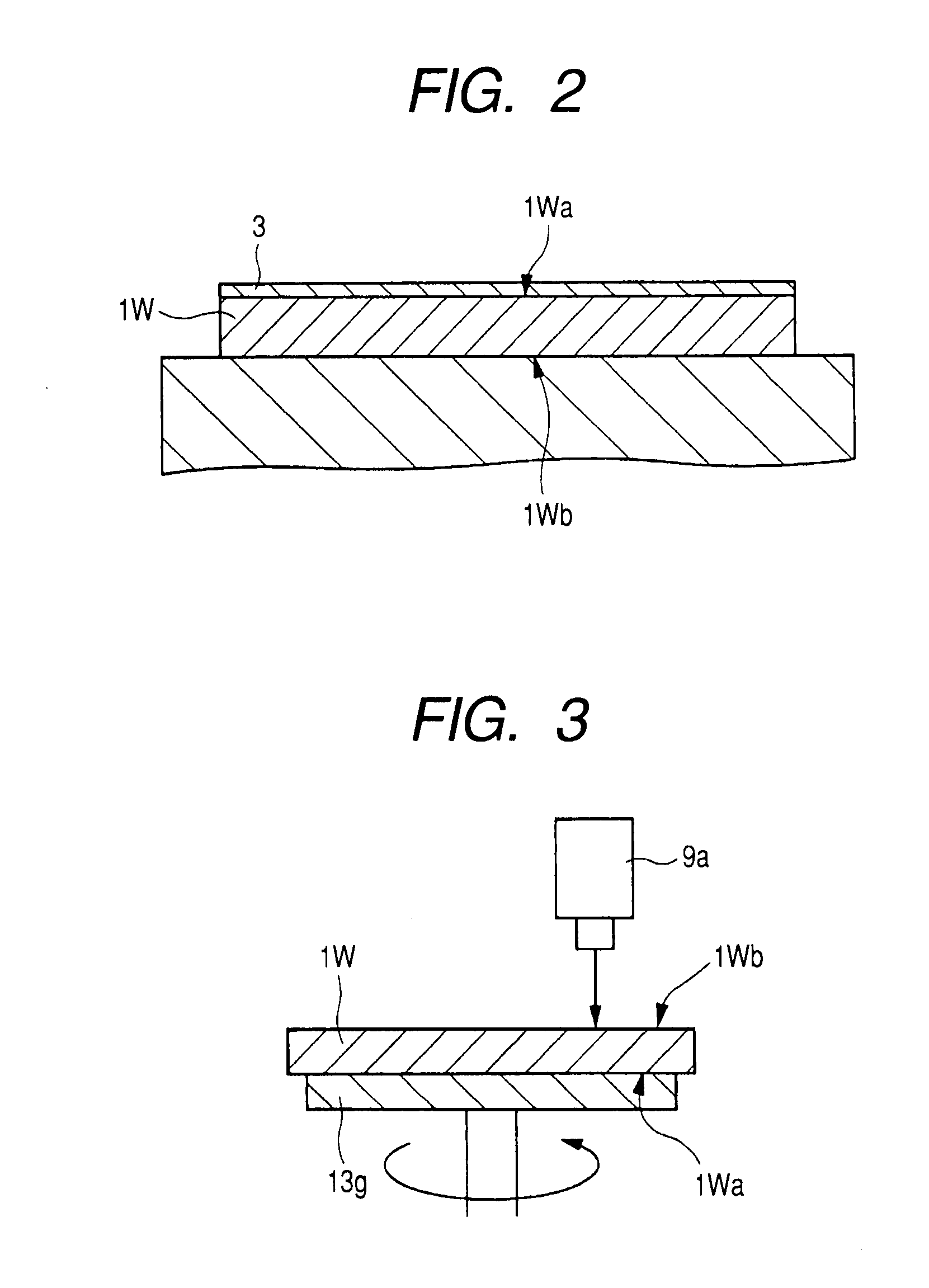Manufacturing method of a semiconductor device
a manufacturing method and technology of a semiconductor device, applied in the direction of semiconductor/solid-state device manufacturing, basic electric elements, electric devices, etc., can solve the problems of wafer to divide into chips, and large stress applied to the wafer, so as to achieve the improvement of the reliability of the semiconductor device, the effect of preventing the shift and movement of the semiconductor chip and preventing the generation of chipping
- Summary
- Abstract
- Description
- Claims
- Application Information
AI Technical Summary
Benefits of technology
Problems solved by technology
Method used
Image
Examples
first embodiment
[0050]FIG. 1 is a flow diagram showing one example of a manufacturing method of a semiconductor device of a first embodiment of this invention; FIG. 2 is a sectional view showing one example of a BG-tape attached state in the flow shown in FIG. 1; FIG. 3 is a conceptual diagram showing one example of a state of thickness measurement of the wafer in the flow shown in FIG. 1; FIG. 4 is a conceptual diagram showing one example of a wafer thickness measuring instrument in the flow shown in FIG. 1; and FIG. 5 is a conceptual diagram showing one example of an output waveform of the thickness measuring instrument shown in FIG. 4. Moreover, FIG. 6 is a plan view showing one example of a construction of backside BG equipment in the flow shown in FIG. 1; FIG. 7 is a conceptual diagram showing one example of a backside grinding state in the flow shown in FIG. 1; FIG. 8 is a conceptual diagram showing one example of a laser dicing state in the flow shown in FIG. 1; FIG. 9 is a sectional diagram...
second embodiment
[0091]FIG. 20 is a flow diagram showing one example of a manufacturing method of a semiconductor device of a second embodiment of this invention. FIG. 21 is a sectional view showing one example of a wafer mount state in the flow shown in FIG. 20. FIG. 22 is a sectional view showing one example of a UV irradiation state in the flow shown in FIG. 20; FIG. 23 is a sectional view showing one example of an expanding state in the flow shown in FIG. 20, and FIG. 24 is a sectional view showing one example of a picking-up state in the manufacturing method of a semiconductor device of the second embodiment of this invention.
[0092]The manufacturing method of a semiconductor device of this second embodiment, like the first embodiment, relates to assembly of a semiconductor device with a mounted thin semiconductor chip of a chip thickness of 50 μm or less. A point different from the first embodiment is that, in mounting the wafer on the dicing tape 5, the semiconductor wafer 1W is directly mount...
PUM
 Login to View More
Login to View More Abstract
Description
Claims
Application Information
 Login to View More
Login to View More - R&D
- Intellectual Property
- Life Sciences
- Materials
- Tech Scout
- Unparalleled Data Quality
- Higher Quality Content
- 60% Fewer Hallucinations
Browse by: Latest US Patents, China's latest patents, Technical Efficacy Thesaurus, Application Domain, Technology Topic, Popular Technical Reports.
© 2025 PatSnap. All rights reserved.Legal|Privacy policy|Modern Slavery Act Transparency Statement|Sitemap|About US| Contact US: help@patsnap.com



